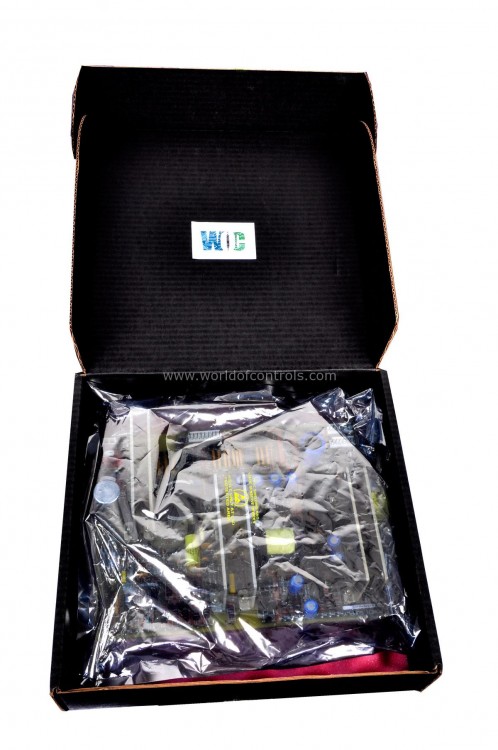
World Of Controls understands the criticality of your requirement and works towards reducing the lead time as much as possible.
DS200DENQF1BDC - Software PROM is available in stock which ships the same day.
DS200DENQF1BDC - Software PROM comes in UNUSED as well as REBUILT condition.
To avail our best deals for DS200DENQF1BDC - Software PROM, contact us and we will get back to you within 24 hours.
Part Number: DS200DENQF1BDC
Manufacturer: General Electric
Series: Mark V
Product type: Software PROM
Availability: In Stock
Country of Manufacture: United States (USA)
DS200DENQF1BDC is a Software PROM designed and developed by GE. It is a part of Mark V control system. The Mark V system utilizes three basic forms of voting to ensure the accuracy and reliability of control. One of these voting mechanisms is Software Implemented Fault Tolerance (SIFT). It involves each controller independently reading its sensors, exchanging data with the other controllers, and calculating the median value of analog inputs to determine the control parameter.
The primary controllers, denoted as R, S, and T, represent the core components of the Mark V control system and are pivotal in ensuring the system's efficient and reliable operation. Here is an expanded explanation of the primary controllers and their essential features:
The three controllers, R, S, and T, are physically separate and independent modules, each containing all the necessary hardware and software for control and protection functions. This design ensures that the system can continue to operate effectively even if one of the controllers experiences a failure. In the event of a failure, the system can automatically diagnose the issue down to the card level and display an alarm message, alerting maintenance personnel to the problem.
One of the remarkable features of the Mark V control system is its ability to perform maintenance tasks while the turbine is online. In case of a controller failure, maintenance personnel can safely power down the affected controller and replace the defective card without interrupting the turbine's operation. This capability minimizes downtime and contributes to the system's overall reliability.
To enhance fault tolerance and ensure the reliability of the control and trip protection systems, redundant sensors are employed. These redundant sensors create a "total system" fault-tolerant design. This approach enables the system's diagnostics to distinguish between redundant sensor failures and electronics failures, further enhancing the system's robustness.
The Mark V control system utilizes three basic forms of voting to ensure the accuracy and reliability of control. The first form of voting is known as Software Implemented Fault Tolerance (SIFT). At the beginning of each computing time frame, each controller independently reads its sensors and exchanges this data with the other two controllers. Subsequently, the median value of each analog input is calculated in each controller, and this median value is used as the resultant control parameter for that specific controller.
The Mark V system employs diagnostic algorithms to continuously monitor the analog inputs to each controller. These algorithms define a predefined deadband for each analog input. If any of the analog inputs deviates from this deadband, a diagnostic alarm is triggered to alert maintenance personnel. This proactive approach to diagnostics ensures that issues are identified and addressed promptly, contributing to the overall reliability and safety of the system.
WOC is happy to assist you with any of your GE requirements. Please contact us by phone or email for pricing and availability on any parts and repairs.
What is DS200DENQF1BDC?
It is a Software PROM designed and developed by GE
What are the primary controllers in the Mark V control system?
The primary controllers in the Mark V control system are denoted as R, S, and T. They are physically separate and independent modules responsible for control and protection functions.
How does the Mark V system ensure the reliability of its control functions?
The Mark V system employs redundant sensors to enhance fault tolerance. These redundant sensors distinguish between sensor failures and electronics failures, contributing to the system's robustness.
Can maintenance be performed on the primary controllers while the turbine is online?
Yes, the Mark V control system allows maintenance personnel to power down and replace defective cards in the primary controllers while the turbine remains online, minimizing downtime.
What is Software Implemented Fault Tolerance (SIFT) in the context of the Mark V system?
SIFT is one of the voting mechanisms used in the Mark V system. It involves each controller independently reading its sensors, exchanging data with the other controllers, and calculating the median value of analog inputs to determine the control parameter. This ensures precision and reliability in control.